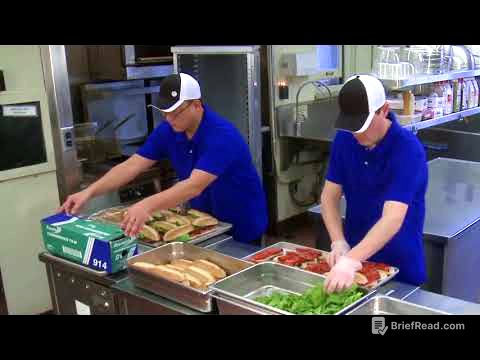TLDR;
This video explores the challenges and opportunities in SIA Bunga, Zambia, focusing on the impact of the Kariba Dam and the efforts to combat food insecurity through the Food for Assets program. It highlights the resilience and resourcefulness of the local people, particularly women and the elderly, in building sustainable livelihoods despite environmental and economic hardships. The video also showcases the success of the Harvest Health program in linking growers to markets and promoting food processing, ultimately transforming lives and fostering self-reliance within the community.
- The Kariba Dam's construction displaced communities, leading to food insecurity in SIA Bunga.
- The Food for Assets program, supported by the WFP and local ministries, helps vulnerable households build sustainable livelihoods.
- Harvest Health links growers to markets and promotes food processing to ensure farmers' sustainability.
Introduction to SIA Bunga and the Kariba Dam's Impact [1:22]
SIA Bunga, a town of approximately 78,000 people, is home to the Kariba Dam and Lake Kariba. While the dam has brought benefits to Zambia in terms of national development, the local people of SIA Bunga have faced challenges. The damming of the Zambezi River displaced communities from their productive lands, leading to food insecurity and poverty. Despite the emergence of a fishing industry and increased tourism, many inhabitants still struggle to sustain their lives due to the secluded location and lack of development.
Addressing Food Insecurity with the Food for Assets Program [4:26]
Food insecurity is a significant problem in SIA Bunga due to erratic rainfall, droughts, flash floods, and deforestation, which leads to soil erosion. The Food for Assets program, supported by the UNDP and the Ministry of Community Development and Social Welfare, aims to assist affected communities in building and developing assets. This program targets vulnerable community members who are able to engage in activities that improve their lives. The WFP supports this initiative as part of an emergency operation to assist people displaced to arid lands, providing food in exchange for work that creates community assets.
Success Stories: Kennedy Blanket and Guinea Fowl Farming [8:11]
Kennedy Blanket, a resident of SIA Bunga, exemplifies the success of the Food for Assets program. Starting with one guinea fowl, he bred 368 fowls, sold 300 of them, and used the proceeds to acquire assets for his farm, including goats and cows. This demonstrates how the program empowers individuals to improve their livelihoods through sustainable farming practices.
Empowering Vulnerable Groups: The Elderly and Women [10:01]
The Food for Assets program supports a wide range of people, from the elderly to the young, with elderly people being a key target group. The program recognizes that traditional extended family support is diminishing, and everyone needs to contribute to their own well-being. Women, who often serve as caretakers of households, are also prioritized to ensure they have access to facilities that provide good livelihood opportunities, thus ensuring food security for their children and communities. Margaret Homonka, a former beneficiary, developed a sustainable livelihood through the program.
Challenges and Tenacity in Farming [14:44]
Growing food in SIA Bunga and Guembe districts is challenging due to unfavorable climatic conditions. Despite these difficulties, the people of SIA Bunga have shown tenacity and dedication in building a living for themselves.
Harvest Health and Food Security Projects [16:13]
One of the most successful examples of the Harvest Health food security projects has been the establishment of thriving gardens. Beneficiaries use these gardens for food and also for sales. Harvest Health also links growers to markets to ensure they have a readily available outlet for their produce. The program looks at both local and external markets, focusing on products that can be consumed within SIA Bunga, with any excess being exported.
Linking Growers to Markets and Food Processing [17:39]
Harvest Health has embarked on linking growers to markets, ensuring that farmers have a readily available market for their produce. They also work with Sylva Food Solutions to engage farmers in food processing, mainly vegetable processing, to alleviate market pressure. Strong farmer-market linkages increase production and promote self-sustainability. Farmers are trained and sign a Memorandum of Understanding, ensuring that the products bought from them maintain the highest quality of processing.
Long-Term Impact and Sustainability [20:17]
Even though the project has come to an end, many participants have continued to expand their activities. For example, in the fisheries program, people started digging their own containment areas and managed to get good water resources. This has become a major source of fish, demonstrating the long-term impact and sustainability of the program. The commitment of the people and the support of the World Food Program have shown that they are capable of making a living. The model employed by Harvest Health ensures continuity, allowing beneficiaries to move into a sustainable lifestyle that improves year by year.









